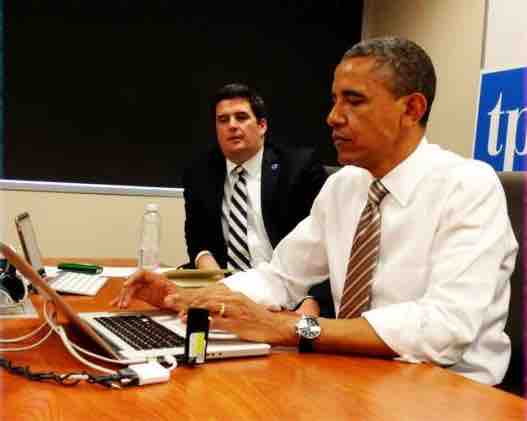Engaging with the media is an essential part of any presidential campaign. Usually, the candidate's campaign manager is tasked with engaging with the media. Although people often assume that candidates are elected because of their policy positions, many presidential elections are won and lost based on likability of the candidate. Americans only "get to know" a candidate through the representation of the candidate in the media.
Throughout the history of American elections, journalists have followed candidates as they advertised their positions, gave speeches, and visited American towns. This tradition continues today, with certain journalists being given the sole responsibility of following candidates. In the 2008 campaign, Republican candidate Senator John McCain created a unique space to engage with journalists, inviting them to travel with him throughout the course of his campaign on his campaign bus, called "the Straight Talk Express" in reference to his engagement with journalists.
Campaign journalism has developed with the times. With the advent of television, TV reporters were sent to cover elections. Campaign engagement with the media has changed again with the proliferation of social media. Today, candidates are expected to have Facebook and Twitter accounts and to be fluent in the language of social media. This was particularly clear by then-candidate Senator Barack Obama's use of social media in the 2008 election. The campaign relied heavily on social media to engage voters, recruit campaign volunteers and raise funds. It brought the spotlight on the importance of using the internet in a new age of political campaigning by utilizing various forms of social media such as Facebook and YouTube to reach targeted audiences. In the 2008 and 2012 elections, Barack Obama supporters could sign up for volunteer shifts and donate funds through apps on their mobile phones. The campaign's social website, my.BarackObama.com, utilized a low cost and efficient method of mobilizing voters and increasing participation among various voter populations. President Obama's efforts to reach out through new media are credited with bringing in the support of young Americans and contributing to his 2008 victory . This practice has now become standard; Republican candidate Governor Mitt Romney also released an app in 2012.

President Obama Tweeting
This image shows President Obama answering tweets, demonstrating his proficiency with social media and appealing to younger voters.
But even with the rise of new media, campaigns continue to spend hundreds of millions of dollars buying air time on television networks to put on campaign advertisements. Television ads have been popular because they are an effective way to reach millions of voters at once. Campaign ads can either be positive, supporting the views of the particular candidate buying the air time, or negative, deriding the candidate's opponent. Television campaign ads have been accused of being manipulative, but have been incredibly successful in influencing voter perceptions of the candidates.